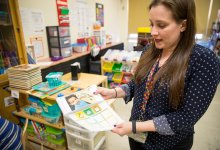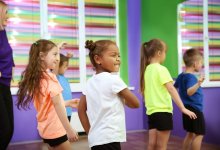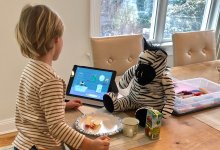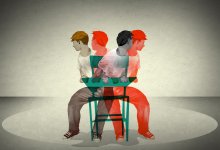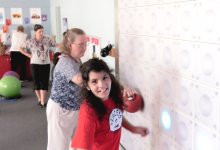Special Education
Explore and share tips, strategies, and resources for supporting students with special needs.
Helping Students See Their IEPs as Tools
By guiding middle school students to understand the purpose and power of their IEPs, teachers can start an important conversation about self-advocacy.Your content has been saved!
Go to My Saved Content.The Sensory Room: Helping Students With Autism Focus and Learn
Imagine a safe space where students with autism can go to calm their bodies and then get back to the business of learning.20.7MYour content has been saved!
Go to My Saved Content.A One-Page Chart to Support Every Student Every Day
Teachers can use this spreadsheet—free template included—to track accommodations and strengths to keep students on track and motivated.3 Ways to Help Students Build Attention Stamina
These simple tools and strategies can improve focus in the classroom.New Strategies in Special Education as Kids Learn From Home
In special education, teachers say that schedules, sensory supports, and close collaboration with families can help smooth the transition to remote learning.361.5kYour content has been saved!
Go to My Saved Content.Supporting Students With Dysgraphia
While there's not a lot of research on dysgraphia yet, there are a few signs you should look out for, and some evidence-based tactics to help kids with the writing condition.376.9kYour content has been saved!
Go to My Saved Content.How to Improve Distance Learning for Students With IEPs
Strategies for parental involvement and synchronous and asynchronous activities can help students with individualized education programs.316.6kYour content has been saved!
Go to My Saved Content.Do Fidgets Help Students Focus?
Don’t let the devices run amok in your classroom, experts warn. Here’s the right—and wrong—way to handle them.The Missing Autistic Girls
In the past two decades, autism diagnoses have soared—but new research shows that girls have frequently been overlooked, leaving them without crucial support.350.1kYour content has been saved!
Go to My Saved Content.17 Ways to Help Students With ADHD Concentrate
Teacher-tested ideas to help students quietly fidget.287.7kYour content has been saved!
Go to My Saved Content.Apps for Students With Special Needs—As School Buildings Shutter
The coronavirus creates a unique challenge for students with special needs—educators share recommendations for apps to support learning at home.190.3kYour content has been saved!
Go to My Saved Content.Understanding How You Can Help Students With Dyscalculia
By providing targeted supports and instruction, teachers can help students with dyscalculia find more comfort and success in math class.4.9kYour content has been saved!
Go to My Saved Content.5 Ways to Support Kids With ADHD During Remote Learning
Without the rules and structure of the classroom, students with ADHD are struggling. Here’s how teachers can help.148.5kYour content has been saved!
Go to My Saved Content.Sensory Room 101
After we published a video about a special room designed to help autistic kids calm and focus themselves, you had questions. Here’s what it takes to create this kind of space.239.7kYour content has been saved!
Go to My Saved Content.Teacher Collaboration That Supports All Students
These 3 strategies can help new general education teachers work collaboratively and productively with special education teachers.6.3kYour content has been saved!
Go to My Saved Content.



